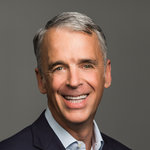
Salesforce Inc
NYSE:CRM


| US |

|
Johnson & Johnson
NYSE:JNJ
|
Pharmaceuticals
|
| US |

|
Berkshire Hathaway Inc
NYSE:BRK.A
|
Financial Services
|
| US |

|
Bank of America Corp
NYSE:BAC
|
Banking
|
| US |

|
Mastercard Inc
NYSE:MA
|
Technology
|
| US |

|
UnitedHealth Group Inc
NYSE:UNH
|
Health Care
|
| US |

|
Exxon Mobil Corp
NYSE:XOM
|
Energy
|
| US |

|
Pfizer Inc
NYSE:PFE
|
Pharmaceuticals
|
| US |

|
Palantir Technologies Inc
NYSE:PLTR
|
Technology
|
| US |

|
Nike Inc
NYSE:NKE
|
Textiles, Apparel & Luxury Goods
|
| US |

|
Visa Inc
NYSE:V
|
Technology
|
| CN |

|
Alibaba Group Holding Ltd
NYSE:BABA
|
Retail
|
| US |

|
3M Co
NYSE:MMM
|
Industrial Conglomerates
|
| US |

|
JPMorgan Chase & Co
NYSE:JPM
|
Banking
|
| US |

|
Coca-Cola Co
NYSE:KO
|
Beverages
|
| US |

|
Walmart Inc
NYSE:WMT
|
Retail
|
| US |

|
Verizon Communications Inc
NYSE:VZ
|
Telecommunication
|
Utilize notes to systematically review your investment decisions. By reflecting on past outcomes, you can discern effective strategies and identify those that underperformed. This continuous feedback loop enables you to adapt and refine your approach, optimizing for future success.
Each note serves as a learning point, offering insights into your decision-making processes. Over time, you'll accumulate a personalized database of knowledge, enhancing your ability to make informed decisions quickly and effectively.
With a comprehensive record of your investment history at your fingertips, you can compare current opportunities against past experiences. This not only bolsters your confidence but also ensures that each decision is grounded in a well-documented rationale.
Do you really want to delete this note?
This action cannot be undone.

| 52 Week Range |
217.0823
367.4507
|
| Price Target |
|
We'll email you a reminder when the closing price reaches USD.
Choose the stock you wish to monitor with a price alert.

|
Johnson & Johnson
NYSE:JNJ
|
US |

|
Berkshire Hathaway Inc
NYSE:BRK.A
|
US |

|
Bank of America Corp
NYSE:BAC
|
US |

|
Mastercard Inc
NYSE:MA
|
US |

|
UnitedHealth Group Inc
NYSE:UNH
|
US |

|
Exxon Mobil Corp
NYSE:XOM
|
US |

|
Pfizer Inc
NYSE:PFE
|
US |

|
Palantir Technologies Inc
NYSE:PLTR
|
US |

|
Nike Inc
NYSE:NKE
|
US |

|
Visa Inc
NYSE:V
|
US |

|
Alibaba Group Holding Ltd
NYSE:BABA
|
CN |

|
3M Co
NYSE:MMM
|
US |

|
JPMorgan Chase & Co
NYSE:JPM
|
US |

|
Coca-Cola Co
NYSE:KO
|
US |

|
Walmart Inc
NYSE:WMT
|
US |

|
Verizon Communications Inc
NYSE:VZ
|
US |
This alert will be permanently deleted.
 Salesforce Inc
Salesforce Inc
Salesforce Inc





In the bustling world of enterprise technology, Salesforce Inc. stands as a towering beacon of cloud computing innovation. Founded in 1999 by Marc Benioff and a team of Oracle alumni, Salesforce has transformed itself from a fledgling startup into a global leader with a signature product: its Customer Relationship Management (CRM) platform. Central to its business model is the provision of cloud-based software solutions that help businesses manage their customer interactions, streamline workflows, and drive strategic growth. Salesforce does this through a subscription-based model, offering a suite of applications that include not just customer management tools, but also services for sales, marketing automation, analytics, and application development.
Revenue streams are diverse yet intricately interconnected. While the flagship CRM products are the company's bread and butter, Salesforce has expanded into other areas through acquisitions, such as Tableau for analytics and Mulesoft for application integration. This strategy not only diversifies its offerings but strengthens its ecosystem, creating a compelling value proposition for enterprises looking to embrace digital transformation. By integrating these various services, Salesforce positions itself as indispensable to the modern business landscape—a one-stop shop for companies seeking to enhance productivity and competitiveness through cutting-edge cloud technology. The company’s continuous commitment to innovation, coupled with its extensive partner network, fuels a virtuous cycle of customer retention and long-term financial growth.

In the bustling world of enterprise technology, Salesforce Inc. stands as a towering beacon of cloud computing innovation. Founded in 1999 by Marc Benioff and a team of Oracle alumni, Salesforce has transformed itself from a fledgling startup into a global leader with a signature product: its Customer Relationship Management (CRM) platform. Central to its business model is the provision of cloud-based software solutions that help businesses manage their customer interactions, streamline workflows, and drive strategic growth. Salesforce does this through a subscription-based model, offering a suite of applications that include not just customer management tools, but also services for sales, marketing automation, analytics, and application development.
Revenue streams are diverse yet intricately interconnected. While the flagship CRM products are the company's bread and butter, Salesforce has expanded into other areas through acquisitions, such as Tableau for analytics and Mulesoft for application integration. This strategy not only diversifies its offerings but strengthens its ecosystem, creating a compelling value proposition for enterprises looking to embrace digital transformation. By integrating these various services, Salesforce positions itself as indispensable to the modern business landscape—a one-stop shop for companies seeking to enhance productivity and competitiveness through cutting-edge cloud technology. The company’s continuous commitment to innovation, coupled with its extensive partner network, fuels a virtuous cycle of customer retention and long-term financial growth.
Earnings Calls
Management

Marc R. Benioff is the co-founder, chairman, and CEO of Salesforce, a leading cloud computing company known for its customer relationship management (CRM) software. Born on September 25, 1964, in San Francisco, California, Benioff displayed an early interest in technology and innovation. He graduated with a Bachelor of Science in Business Administration from the University of Southern California in 1986. Benioff began his career at Oracle Corporation, where he worked for 13 years, rising to the position of vice president, the company’s youngest person to hold such a role. In 1999, Benioff co-founded Salesforce in a San Francisco apartment, pioneering the software-as-a-service (SaaS) model. Under his leadership, Salesforce grew rapidly and went public in 2004. The company has continually been recognized for its innovation and growth, becoming a dominant player in the tech industry. Benioff is known for his philanthropic efforts, having established the 1-1-1 philanthropic model, which commits 1% of Salesforce's equity, product, and employee time back to the community. His leadership approach integrates a strong focus on social responsibility, equality, and sustainability. In addition to his business and philanthropic endeavors, Benioff is a published author and has written several books, including "Trailblazer: The Power of Business as the Greatest Platform for Change," where he discusses the role of businesses in driving societal transformation. His leadership and vision have not only shaped Salesforce into a successful enterprise but also set a precedent for corporate philanthropy and social responsibility.

He graduated with a Bachelor of Science in Business Administration from the University of Southern California in 1986. Benioff began his career at Oracle Corporation, where he worked for 13 years, rising to the position of vice president, the company’s youngest person to hold such a role.
In 1999, Benioff co-founded Salesforce in a San Francisco apartment, pioneering the software-as-a-service (SaaS) model. Under his leadership, Salesforce grew rapidly and went public in 2004. The company has continually been recognized for its innovation and growth, becoming a dominant player in the tech industry.
Benioff is known for his philanthropic efforts, having established the 1-1-1 philanthropic model, which commits 1% of Salesforce's equity, product, and employee time back to the community. His leadership approach integrates a strong focus on social responsibility, equality, and sustainability.
In addition to his business and philanthropic endeavors, Benioff is a published author and has written several books, including "Trailblazer: The Power of Business as the Greatest Platform for Change," where he discusses the role of businesses in driving societal transformation. His leadership and vision have not only shaped Salesforce into a successful enterprise but also set a precedent for corporate philanthropy and social responsibility.

Brian Millham is a notable executive at Salesforce, one of the leading customer relationship management (CRM) platform companies globally. As of 2023, he serves as the President and Chief Operating Officer (COO) of Salesforce, playing a crucial role in managing the day-to-day operations and helping guide the company’s strategic direction. Millham has been with Salesforce for a significant period and has held various key positions within the company, showcasing his deep understanding of Salesforce's business and customer-focused strategies. His roles have included leading the Success Cloud and professional services, where he was pivotal in driving customer success and engagement. Known for his leadership skills, Millham is credited with helping scale Salesforce's global sales and customer service operations, contributing to the company’s rapid growth and maintaining its competitive edge in the technology sector. He holds a Bachelor’s degree in Business Administration from the University of Colorado Boulder. Millham's leadership is characterized by a strong commitment to innovation, customer satisfaction, and operational excellence, which aligns with Salesforce's mission to empower businesses through powerful and adaptable CRM solutions.

Millham has been with Salesforce for a significant period and has held various key positions within the company, showcasing his deep understanding of Salesforce's business and customer-focused strategies. His roles have included leading the Success Cloud and professional services, where he was pivotal in driving customer success and engagement.
Known for his leadership skills, Millham is credited with helping scale Salesforce's global sales and customer service operations, contributing to the company’s rapid growth and maintaining its competitive edge in the technology sector. He holds a Bachelor’s degree in Business Administration from the University of Colorado Boulder.
Millham's leadership is characterized by a strong commitment to innovation, customer satisfaction, and operational excellence, which aligns with Salesforce's mission to empower businesses through powerful and adaptable CRM solutions.


Parker Harris is one of the co-founders of Salesforce Inc., a leading cloud-based software company known for its customer relationship management (CRM) solutions. He played a pivotal role in shaping the company's technological vision and innovation. Born on December 5, 1967, Harris holds a Bachelor of Arts degree in English literature from Middlebury College. Joining forces with Marc Benioff and two other co-founders in 1999, Harris was instrumental in developing Salesforce's initial technology infrastructure and cloud architecture. He has served as Executive Vice President of Technology, where his responsibilities focused on directing product strategy and technical development. Harris is recognized for emphasizing the importance of simplicity and user-friendliness in software design, helping Salesforce maintain a competitive edge in the tech industry. He has been a major advocate for the company's move towards cloud computing and has contributed to numerous strategic initiatives that have solidified Salesforce's status as a pioneer in digital transformation. Throughout his tenure, Harris has been integral to the company's innovations, including the introduction of various new products and services that have expanded Salesforce's capabilities and market reach. Known for his collaborative leadership style, Harris continues to influence the direction of Salesforce's technical and product development efforts.

Joining forces with Marc Benioff and two other co-founders in 1999, Harris was instrumental in developing Salesforce's initial technology infrastructure and cloud architecture. He has served as Executive Vice President of Technology, where his responsibilities focused on directing product strategy and technical development.
Harris is recognized for emphasizing the importance of simplicity and user-friendliness in software design, helping Salesforce maintain a competitive edge in the tech industry. He has been a major advocate for the company's move towards cloud computing and has contributed to numerous strategic initiatives that have solidified Salesforce's status as a pioneer in digital transformation.
Throughout his tenure, Harris has been integral to the company's innovations, including the introduction of various new products and services that have expanded Salesforce's capabilities and market reach. Known for his collaborative leadership style, Harris continues to influence the direction of Salesforce's technical and product development efforts.

Miguel Milano is a well-regarded executive known for his leadership at Salesforce, a leading cloud-based software company specializing in customer relationship management (CRM). At Salesforce, Miguel held the position of President of Salesforce for Europe, Middle East, and Africa (EMEA). In this role, Milano was responsible for driving the company's growth and strategy in one of its key international markets. With extensive experience in the technology sector, Miguel has been instrumental in expanding Salesforce’s presence across the EMEA region, fostering innovation, and building strong customer relationships. Before joining Salesforce, Milano had a significant impact at other major technology firms, bringing strategic insight and leadership that benefitted their operations and expansions. Miguel is known for his customer-centric approach and innovation-driven mindset, which aligns with Salesforce’s emphasis on transforming businesses through enhanced customer engagement and digital transformation. Under his leadership, Salesforce strengthened its market position and expanded its influence in the region.

With extensive experience in the technology sector, Miguel has been instrumental in expanding Salesforce’s presence across the EMEA region, fostering innovation, and building strong customer relationships. Before joining Salesforce, Milano had a significant impact at other major technology firms, bringing strategic insight and leadership that benefitted their operations and expansions.
Miguel is known for his customer-centric approach and innovation-driven mindset, which aligns with Salesforce’s emphasis on transforming businesses through enhanced customer engagement and digital transformation. Under his leadership, Salesforce strengthened its market position and expanded its influence in the region.

David Schmaier is a prominent business executive known for his significant contributions at Salesforce Inc. He joined Salesforce through the company's acquisition of Vlocity, where he was the CEO and co-founder. Vlocity was a cloud software company that specialized in providing industry-specific solutions, and under Schmaier’s leadership, it became a key part of Salesforce's industry cloud strategy. At Salesforce, David Schmaier has served as the Chief Product Officer, playing a crucial role in driving the company's product vision and strategy. His work has focused on expanding Salesforce's offerings and integrating Vlocity’s technology to enhance industry-specific capabilities for customers across various sectors. Schmaier's career spans over three decades in enterprise software, and he has previously held senior positions at other major software companies. He is recognized for his expertise in creating and scaling software solutions that meet complex industry needs, and his leadership has been instrumental in Salesforce's continued growth and innovation in cloud computing.

At Salesforce, David Schmaier has served as the Chief Product Officer, playing a crucial role in driving the company's product vision and strategy. His work has focused on expanding Salesforce's offerings and integrating Vlocity’s technology to enhance industry-specific capabilities for customers across various sectors.
Schmaier's career spans over three decades in enterprise software, and he has previously held senior positions at other major software companies. He is recognized for his expertise in creating and scaling software solutions that meet complex industry needs, and his leadership has been instrumental in Salesforce's continued growth and innovation in cloud computing.

Ariel Kelman is a prominent technology executive known for his leadership roles in major tech companies. Before joining Salesforce, he served as the Chief Marketing Officer at Oracle. He played a significant role in leading marketing efforts for Oracle's cloud services. After his successful stint at Oracle, Kelman joined Amazon Web Services (AWS) as Vice President of Worldwide Marketing, where he was instrumental in shaping AWS's global marketing strategies and driving significant growth. In 2020, Ariel Kelman became the Chief Marketing Officer at Salesforce, Inc. In his role at Salesforce, Kelman is responsible for overseeing the company's global marketing strategy, including brand positioning, product marketing, and customer engagement initiatives. His leadership focuses on driving innovation and expanding Salesforce's reach in the cloud computing industry, leveraging his extensive experience in both product management and marketing within the tech sector. Kelman is recognized for his strategic vision, his ability to foster innovation, and his knack for building strong teams that drive business growth. His contributions to Salesforce aim to further enhance the company’s position as a leader in customer relationship management (CRM) and cloud solutions.

In 2020, Ariel Kelman became the Chief Marketing Officer at Salesforce, Inc. In his role at Salesforce, Kelman is responsible for overseeing the company's global marketing strategy, including brand positioning, product marketing, and customer engagement initiatives. His leadership focuses on driving innovation and expanding Salesforce's reach in the cloud computing industry, leveraging his extensive experience in both product management and marketing within the tech sector.
Kelman is recognized for his strategic vision, his ability to foster innovation, and his knack for building strong teams that drive business growth. His contributions to Salesforce aim to further enhance the company’s position as a leader in customer relationship management (CRM) and cloud solutions.

Juan R. Perez is the Chief Information Officer (CIO) and EVP of Salesforce Inc. He joined Salesforce in 2022, bringing with him a wealth of experience in information technology and supply chain operations. Prior to his role at Salesforce, Perez had a distinguished career at UPS, where he served as Chief Information and Engineering Officer. In this capacity, he was integral in driving innovation and digital transformation efforts, leading various technological advancements and optimizing processes across the organization. Perez's expertise lies in strategically leveraging technology to enhance operational efficiency and create competitive advantages. He has a strong background in managing large-scale IT projects and has been recognized for his leadership in steering complex technological landscapes toward modern, agile, and customer-centric solutions. At Salesforce, Perez plays a crucial role in guiding the company’s IT strategy and ensuring that technological initiatives align with the overall business objectives. His leadership contributes significantly to Salesforce’s mission of driving exceptional customer success through innovative technology solutions.

Perez's expertise lies in strategically leveraging technology to enhance operational efficiency and create competitive advantages. He has a strong background in managing large-scale IT projects and has been recognized for his leadership in steering complex technological landscapes toward modern, agile, and customer-centric solutions. At Salesforce, Perez plays a crucial role in guiding the company’s IT strategy and ensuring that technological initiatives align with the overall business objectives. His leadership contributes significantly to Salesforce’s mission of driving exceptional customer success through innovative technology solutions.

John Somorjai is well known for his role as the Executive Vice President of Corporate Development & Strategy at Salesforce Inc. He has played a pivotal role in shaping Salesforce's strategic growth through mergers, acquisitions, and investments. Under his leadership, Salesforce has successfully acquired and integrated numerous companies, contributing significantly to its expansion and innovation in the cloud computing industry. Before joining Salesforce, John worked at critical intersections of technology and law, utilizing his J.D. degree. His legal and corporate development expertise has been instrumental in guiding Salesforce's strategic direction and business development activities. His work continues to impact the tech industry, helping Salesforce maintain its position as a market leader in enterprise cloud computing solutions. John Somorjai's contributions extend beyond transaction execution; he is involved in shaping long-term strategic decisions that influence Salesforce's place in the competitive tech landscape.

Before joining Salesforce, John worked at critical intersections of technology and law, utilizing his J.D. degree. His legal and corporate development expertise has been instrumental in guiding Salesforce's strategic direction and business development activities. His work continues to impact the tech industry, helping Salesforce maintain its position as a market leader in enterprise cloud computing solutions.
John Somorjai's contributions extend beyond transaction execution; he is involved in shaping long-term strategic decisions that influence Salesforce's place in the competitive tech landscape.





























 You don't have any saved screeners yet
You don't have any saved screeners yet
